Your ultimate guide to UX audits
A User Experience (UX) audit serves as a vital tool for assessing and enhancing the quality of digital products by reviewing their user experience. UX audits explore various aspects, including usability, accessibility, and design consistency, to identify areas for improvement and innovation. Addressing areas for improvement and working on them will make it possible to increase select KPIs and save money for your business in the long run.
In this guide, we’ll briefly introduce what a UX audit is, when it’s suggested to conduct one, and will walk you through the steps of this evaluation process.
.png)
What is a UX audit?
A UX audit is a comprehensive evaluation of the user experience. This evaluation process can help identify the strengths, weaknesses, and areas for improvement in your digital product. It involves analyzing various aspects such as usability, accessibility, navigation, design consistency, and user satisfaction.
It can also include competitor analysis to help position your product on the market. The goal of a UX audit is to provide insights and actionable recommendations. These, when applied, can enhance the user experience within your product, and drive better outcomes for your business.
What is the business value of conducting a UX audit?
There’s a lot to be said about the Return on Investment (ROI) of UX and how to measure them. Here, let’s briefly summarise what can be the biggest business advantage of a UX audit:
- You will get to know your users and their problems better. During the UX audit, you’ll get feedback from real users about their real problems related to your existing product or product idea. This way you can avoid building the wrong digital product or developing a feature that’s not actually wanted by your target audience.
- By building the right product with the right solutions, different KPIs, such as user satisfaction, user retention, and conversion rate can be increased. According to a study by Forrester Research, a good UX design can increase a website’s conversion rate by as much as 400%.
- You can save time and money in the long run. What do we mean by saving cost? On average, businesses report a $100 ROI out of $1 invested in their UX. And time? Among other tasks, good UX design can save development time, since developers will know what to do to ensure proper functionalities and upgrades. Moreover, conducting UX research and creating UX design in advance can lead to a reduction in product development cycles by 33 to 50%.
So, now you know how a good UX can influence your business. Let’s move on to see when it’s most beneficial to conduct an audit.
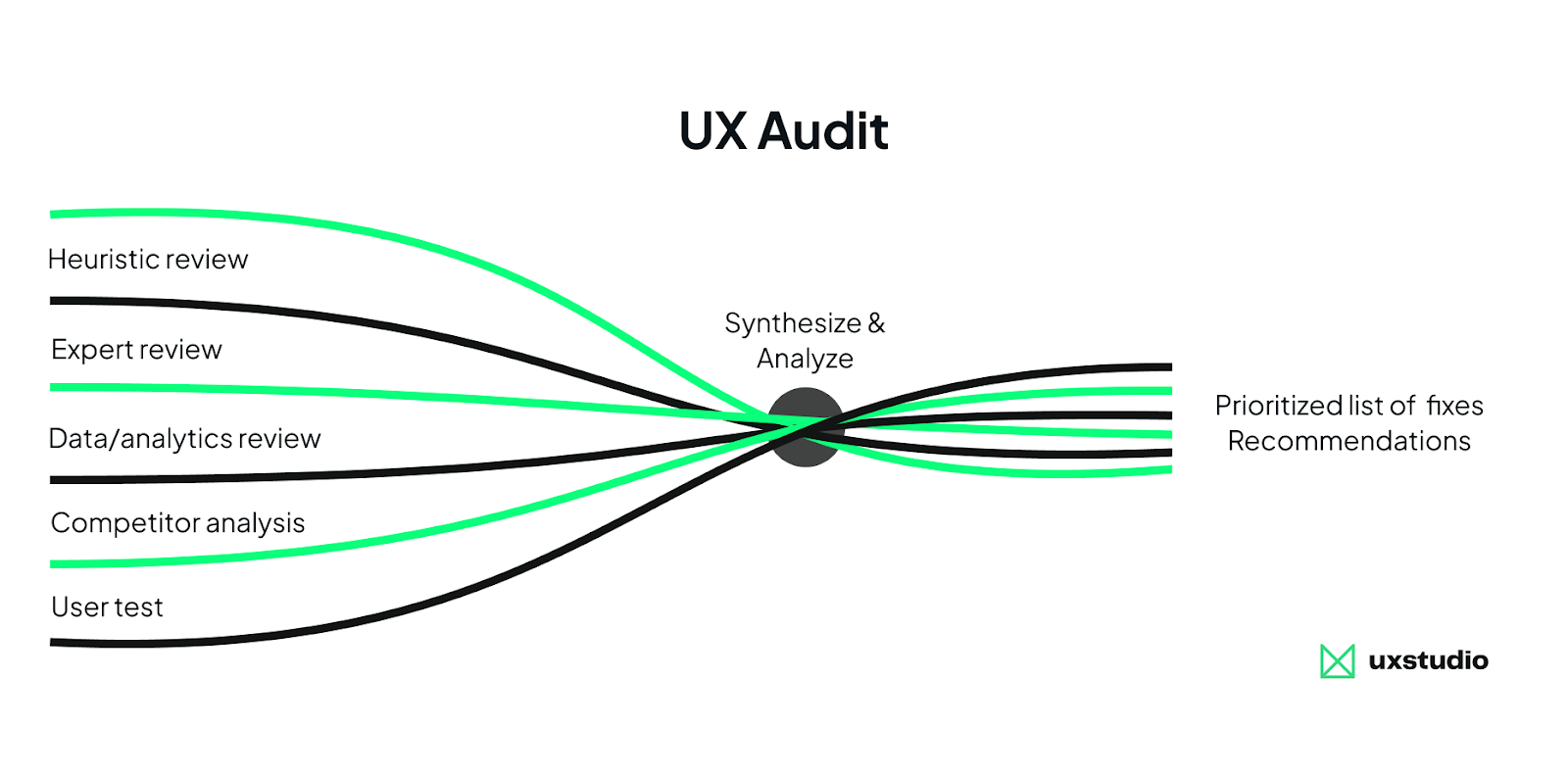
When to conduct a UX audit?
UX audits can be helpful at any stage of your digital product's lifecycle. Yet, we would highly recommend a UX evaluation to identify issues and areas for improvement:
- before starting a redesign process on an existing digital product
- if you plan to develop and implement new functionalities
- for validating new designs before launching them
- for validating their Minimal Viable Products (MVPs) for startups
This way, you will have a professional review and your users' feedback on your product idea, design solutions, and new functionalities you plan to implement. Therefore, you can ensure a digital product that will create an enjoyable experience for its users, thus positively influencing your business.
UX audit vs expert review
When you need quick insights, running a full audit may not be necessary, and you can opt for an expert review instead. Let’s see what differentiates the two methods.
Expert review
- Length and cost: can be used as a quick health check requiring about 5-7 days, so the cost is lower than for a full audit.
- Done by: expert reviews are conducted by experts of a given domain, industry, or category
- Process: UX professionals systematically evaluate a product based on established usability principles and their own expertise.
- Main difference: relies on the expert’s insight, mainly using usability heuristics, does not require user data.
- Output: list of usability issues , severity and recommendations
UX audit
- Length and cost: moderate to high cost with a 3-5 weeks timeline
- Done by: UX audits are ideally conducted by UX researchers, or in some cases, UX designers
- Process: UX audits use multiple data sources and include expert reviews, analytics, user feedback, and competitor analysis.
- Main difference: Audits combine expert judgment with real user data, making them a comprehensive, data driven evaluation of the overall user experience of the product.
- Output: detailed audit report, with visual documentation and actionable insights.
Depending on your budget and schedule, you may choose to run a quick expert review instead of committing to a full UX audit. UX research agencies like UX studio can help you with both, and make further adjustments to fit your business needs.
However, in the following guide, we’ll focus on UX audits, as expert reviews are part of the audition process.
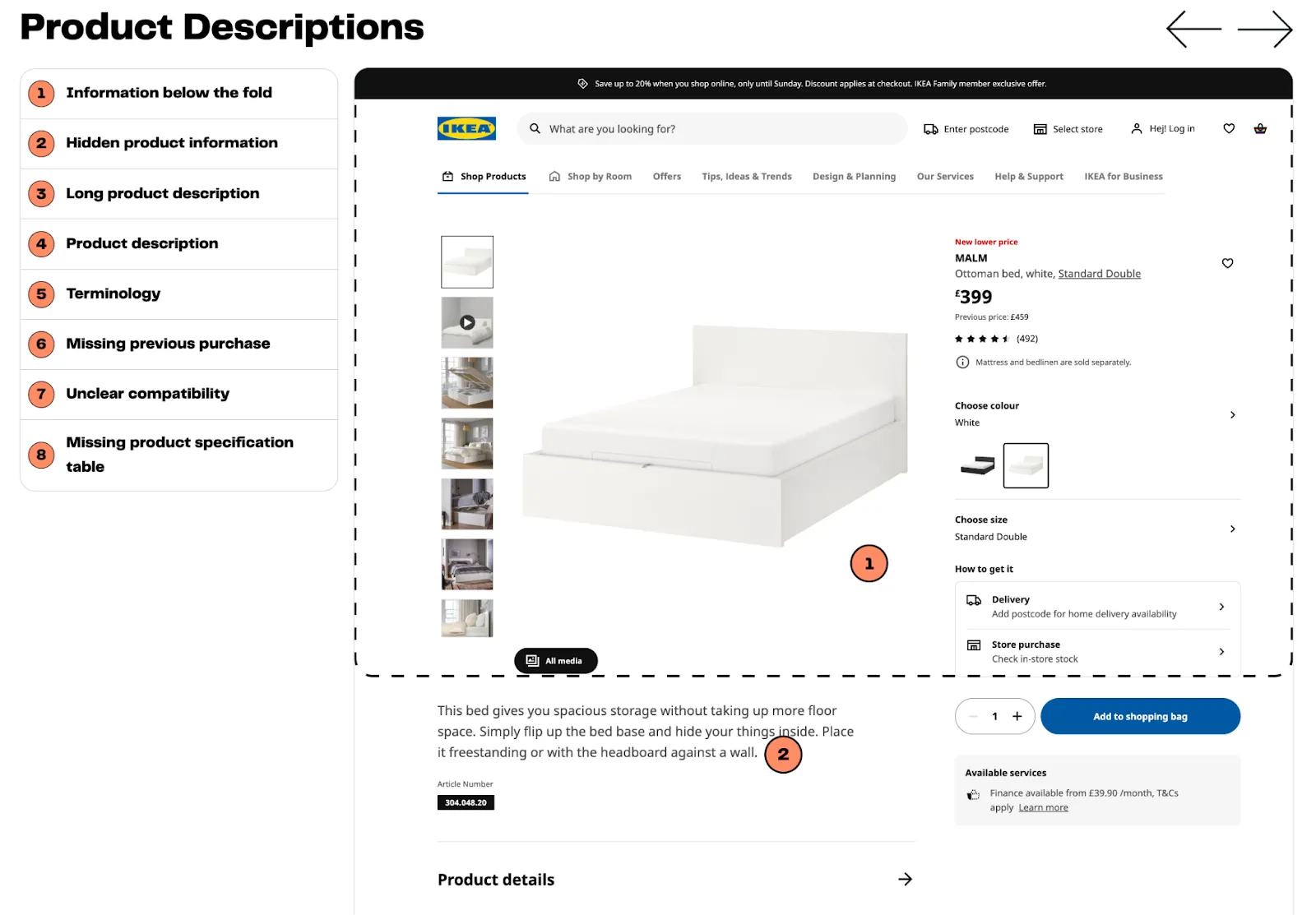
How to conduct a UX audit?
While we would highly recommend hiring an external professional to conduct a UX audit, we often get the question: what’s happening during a usability audit?
So, in this section, we will introduce the steps of a UX audit, from defining objectives to data collection, analysis, and points when the team can align on the next steps to improve your digital product.
If you would like to run a UX audit internally, here, we provide a step-by-step guide. Moreover, we give short but actionable tips and examples to help you finish your audit successfully, and end up with action points that you can move on with. Let’s start!
1st step: Define objectives
To start a UX audit, it’s important to involve people who would be part of the whole process, align on the goal of the audit with the whole team, and decide how to move on.
Checklist
A, Involve the right people:
- Think through whom to involve in this process (e.g.: Leaders, PO, PM, Designers, Researchers).
- Organise a meeting where everybody who would like to be part of this initiative can attend.
- Introduce the framework of a UX audit, so people can get familiar with what is going to happen.
B, Determine the purpose of the audit:
- Sit together, and discuss the reasons why you need this audit. Show evidence, KPIs, data from tracking systems, quotes from users, etc. This way, everybody can understand how the need for a UX audit came up.
- Bring everybody to the same page about the possible advantages of conducting a UX audit.
C, Define the scope of the audit:
- Try to narrow down the goal of the audit. Is it only related to a flow in the product or the whole product? Is it about the web desktop or web mobile version? Is it about an App?
- Also, discuss what would be the end goal of this audit. Is it to see quick and easy-to-apply recommendations? Is it the starting point for a whole redesign process? Is it to hear the whys behind the data the team sees?
D, Decide who will conduct the UX audit
- Discuss who has the capacity and ability to conduct the audit.
- Set an approximate timeline, and align on the next steps for the review.
- Discuss and consider the advantages and disadvantages of hiring someone externally to do it.
If you would like to run a holistic audit of your product, discover the usability issues, and improve your product’s performance — book a free hour-long consultation with UX studio. We will discuss your current goals and challenges and suggest how we can help you conduct the UX audit.

2nd step: Review your current design
Gather all the data you can about your current product to find friction points and areas for improvement.
Checklist
A, Review all data from analytics or tracking software implemented related to your digital product:
- Find friction points in your data. For example: where do people drop off? Where do people circulate the product after a while?
- After seeing the data related to different parts, actions, or flows, identify the part of the product where you could see these issues.
- Review parts of the product where you could find friction points: What is there in the product? What is happening and what can cause the friction? What is the content at that point? Is every action available and easy to recognise? Do they experience bugs there?

B, Evaluate your current design, to explore any inconsistencies in the design, navigation, accessibility, etc.:
- Look through your current design based on UX heuristics.
- Highlight what can be improved based on these UX guidelines.
C, Analyze your competitors and their design solutions:
- List your biggest competitors.
- Try to collect best practices others are doing. Based on these findings during the process of UX audit later on, you can decide on whether you want to apply these solutions or create something new.
- Review and evaluate all the features and other solutions they offer to their users.
- Conduct a SWOT analysis, to list strengths and weaknesses of your product, and identify opportunities and possible threats.
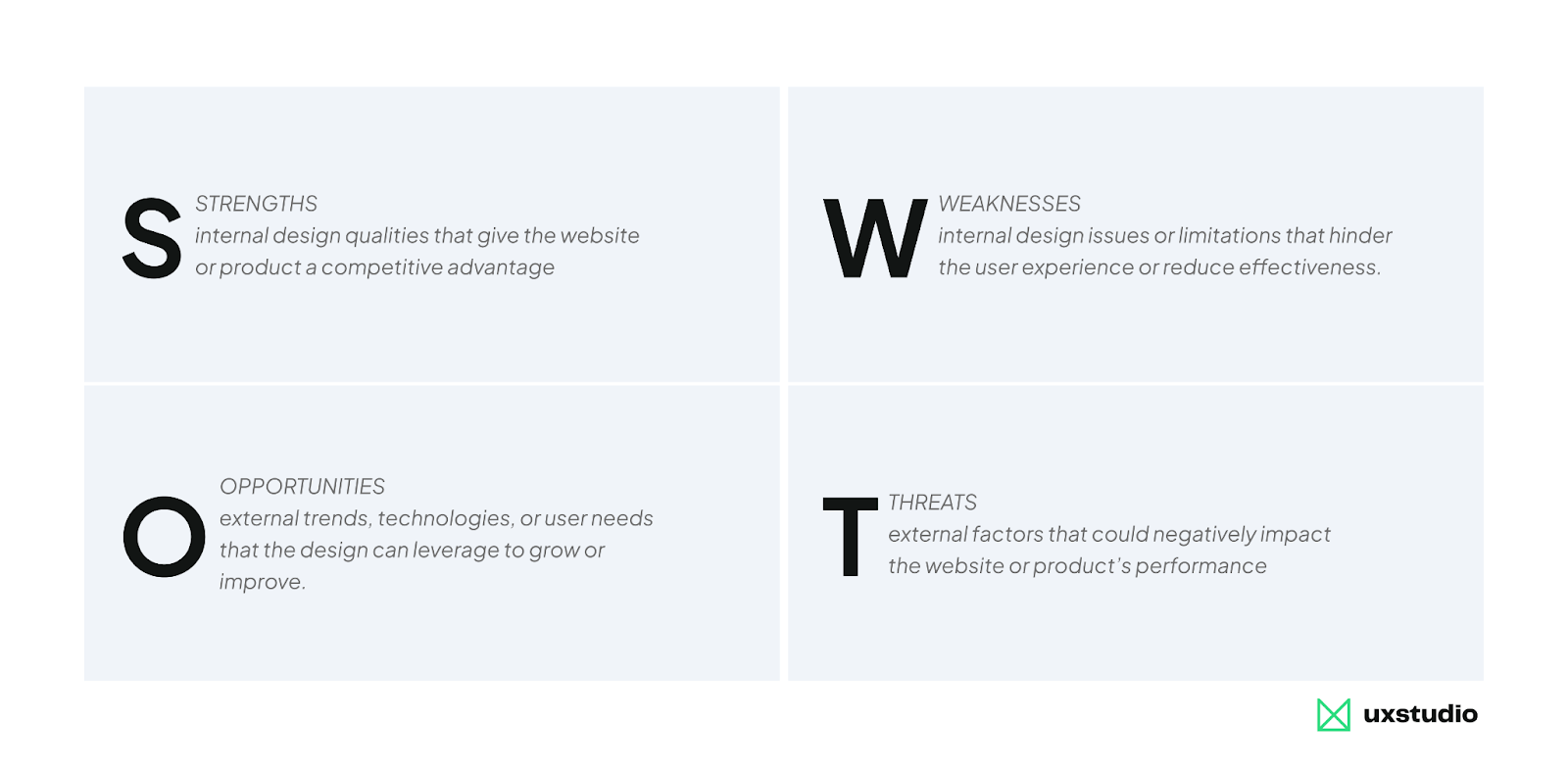
D, User-test your current design to learn about the whys behind the data you collected throughout all the reviews.
- Define the scope of tests, such as the flow you would like to go through with your users, and the questions you have related to those parts.
- Create a plan for these tests. This will help you keep to schedule.
- Recruit existing and/or potential users. You can use various strategies for recruitment, depending on your target audience.
- Create a testing guide.
- Conduct user tests and observe how people interact with your design now. Get feedback and information about their behavior, attitudes, and opinions.
3rd step: Analyze and synthesize data
By this point, you have all the data and insight related to your current design. This is the time to review everything and try to make sense of it.
Checklist
A, Analyze all collected data:
- Collect all the data and insights you gathered during the reviews and usability tests, and organize them.
- Try to understand all your findings, and highlight severe problems. For example: decreasing metric numbers; number of drop-offs; inconsistencies in the design; or problems users mentioned during the testing sessions.
B, Identify common patterns:
- Connect the dots between the data you can see. For example: if you could see a drop in the interaction with a button in analytics, you can take a look at the design, and what the heuristics review showed you about that part.
Moreover, you can also add what users said about that part of the design, and why they didn’t interact with that button. After this, you can consider what your competitors are doing, and decide whether you want to go in the same direction or create a new solution to fix the pain point.

C, Evaluate your findings and prioritize them. At this point, you have all your findings, so it is time to sort them.
- First, list the design pain points that, once addressed, could solve multiple user problems.
- Then, list all the easy fixes to showcase you can make a difference with minimum effort as well at the beginning.
- After these, also list all relevant or interesting findings you think would be worth the discussion, even if they were not in the scope or were not mentioned by all your user test participants.
D, When you are ready to summarize and prioritize your insights, it’s time to create a comprehensive and engaging report.
- Find a narrative arc you would like to use based on the goal of the audit and your findings.
- Create an easy-to-follow frame for it. You can start by introducing the whole evaluation, different steps, and your learnings.
- Make it visually appealing. We all know that visuals engage people more than slides full of text. At any point, if you can use anything to visualise your findings or even the whole process of the evaluation, use it!
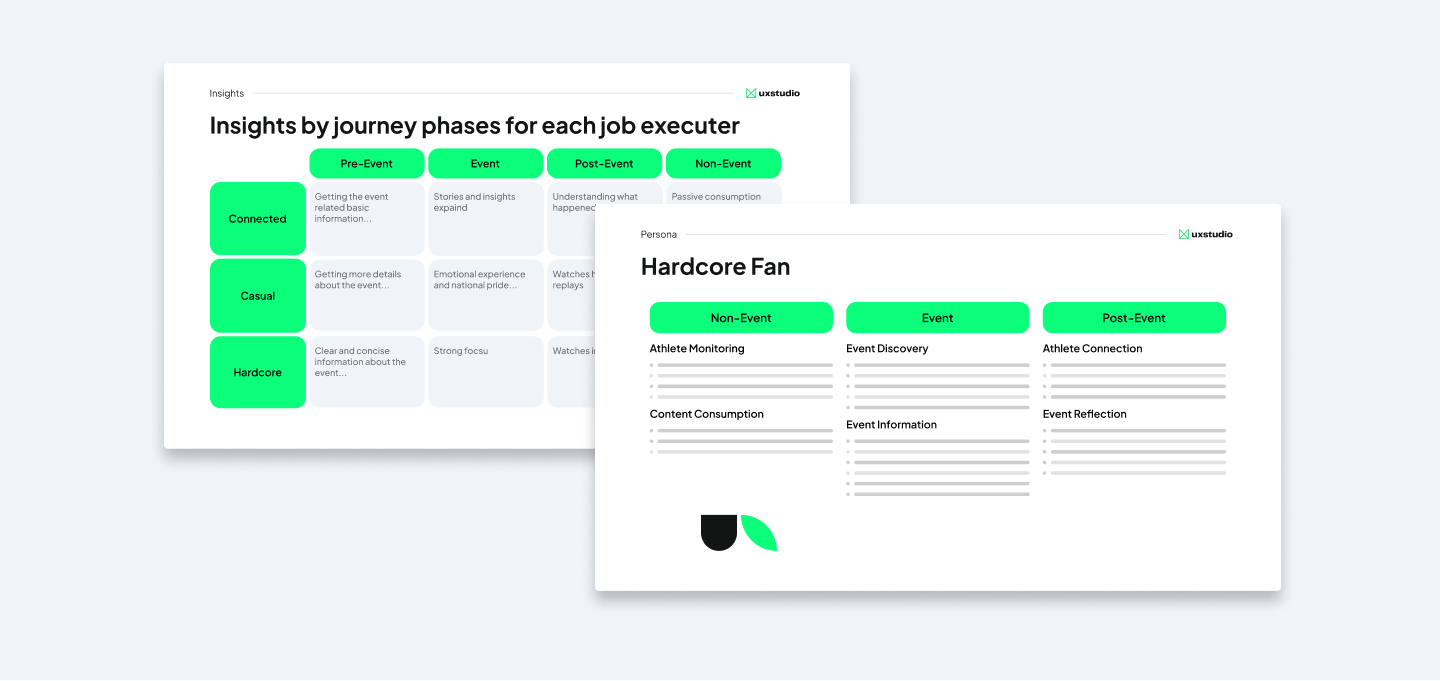
- Include supporting evidence. Find interesting data/numbers, related screenshots, or even exciting or surprising quotes from your usability test participants. With this ‘evidence,’ you can further highlight the importance of the findings and you can engage your audience more.
- Form actionable recommendations. You have all the data, you know what can be improved. Help the team imagine how all the flaws you introduce could be fixed. At this point, you don't need to focus on specific design solutions; instead, consider how these issues could potentially be addressed.
- Add an executive summary at the beginning of your report. Why? Because not everybody will have the time to look through the whole evaluation you create. Make sure that everybody who reads this short summary will get the idea of the framework you used, why you did the evaluation, and what are the main findings and recommendations.
4th step: Present findings
Reports and summaries are great, but whenever you can, you should also organize a presentation. This gives you an opportunity to get feedback, answer questions, and dig deeper.
Checklist
A, Present findings to stakeholders/ leadership/ the team who were involved in the UX audit.
- Here’s how to make a presentation successful: use the technique of storytelling. Try to create a story around the problems you could observe, and introduce them to the participants. Also, highlight the whys behind these problems, and in the end try to emphasise how it is possible to solve these problems.
- Try to make it engaging with the story itself or some interactive parts (asking people to guess problems, or share their thoughts before sharing the data).
- Highlight the main findings and the related actionable recommendations. This is the point where you can introduce which problem would be the priority to solve, and what other small changes could be good to fix.
B, Discuss results and recommendations
- This is the time when everybody can share their thoughts or ask their questions about the audit findings. Encourage everybody to be part of the conversation.
C, Align on the next steps
- Close the discussion by deciding on what can be done to improve the product.
- To make sure your results will be used, align on the next steps and deadlines to make the improvements.
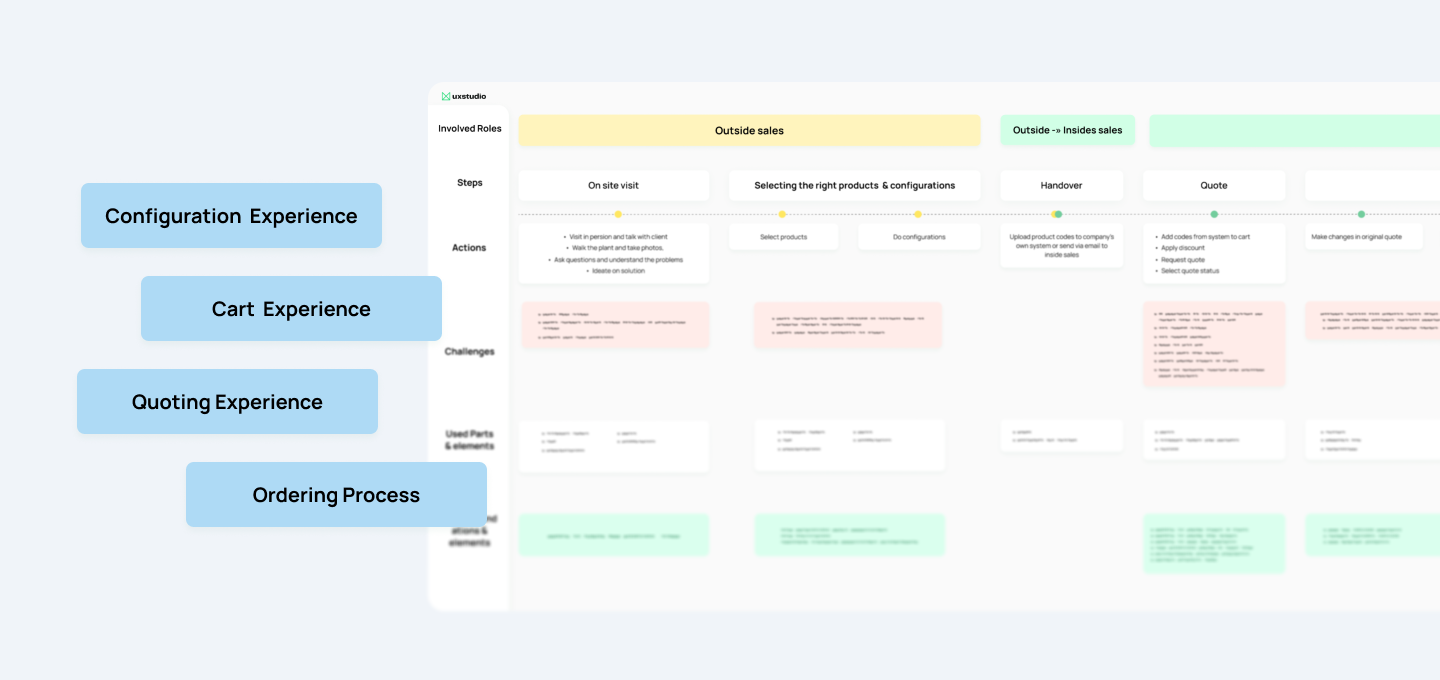
Congratulations! By ticking all the steps, you just finished the UX audit.
Advantages of working with a UX agency on a UX audit
While in-house teams play the main role in understanding and developing the product, involving external UX professionals to conduct a UX audit can have multiple benefits.
1. A fresh, objective perspective
External professionals can take a look at your product with fresh and objective eyes. These professionals are not influenced by internal biases, because they are not close to the project. This way they can identify problems internal colleagues may overlook.
2. Specialized expertise
UX agencies, such as UX studio, have professionals with quite a range of expertise and backgrounds with different types of products from different industries.
Moreover, companies such as ours have all the resources, tools, and methodologies, and can provide a deep and comprehensive evaluation.
Also, these experts have knowledge about different regulations, and how to work with them, such as accessibility, or data privacy.
3. Efficiency and focus
External resources can focus on conducting a UX audit without the distraction of the day-to-day tasks, or responsibilities of other projects. In this way, an UX audit can be conducted within 2-4 weeks.
4. Cost-effectiveness
While hiring external professionals requires an upfront investment, it can be more cost-effective in the long run. It saves the time of your internal team, and allows for the quick identification and fixing of issues.

Additional benefits of UX audits
Conducting UX audits at various stages of the product life cycle ensures continuous improvement and supports long-term business goals. These audits offer crucial insights into your digital products, highlighting areas for improvement and innovation. By analyzing usability, accessibility, and design consistency, businesses can enhance user satisfaction and drive better business outcomes.
Key benefits could include:
- increased KPIs
- saving time and money in the long run
- strategic alignment with user needs
Moreover, collaborating with UX agencies can additionally bring:
- fresh perspectives
- specialized and focused expertise
- cost-effective solutions

Are you interested in a UX audit?
Book a free hour-long consultation with us to discuss your current goals and challenges, and find solutions fit to your schedule and budget.
Credits
This blog post was written by Borbála German, UX researcher
Fact-checked by Barbara Bicskei, UX researcher and studio lead
Edited by Dr. Johanna Székelyhidi, marketing manager



